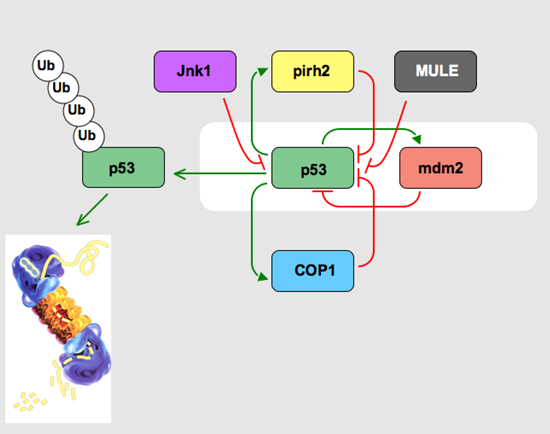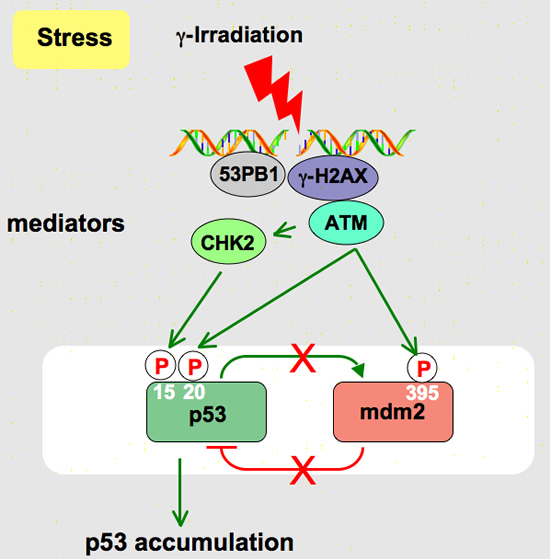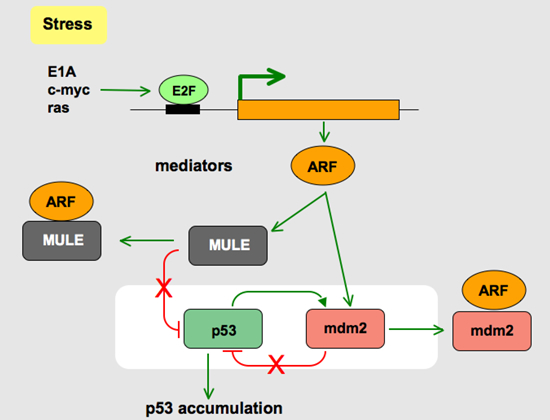p53 and its complex pathways. The p53 pathways
Post# of 72451

The p53 pathways has been conveniently divided into five parts (Levine et al., Cell Death and Diffrentiation (2006), 1-10).
i)The stress signals that activate the pathway
ii) The upstream mediators that detect and interpret the upstream signals.
iii) the core regulation of p53 through its interaction with several proteins that modulate its stability
iv) the downstream events, mainly transcriptional activation or protein protein interactions
v) The final outcome, growth arrest, apoptosis or DNA repair.

p53 pathway: Upstream pathway
i)The stress signals that activate the pathway
ii) The upstream mediators that detect and interpret the upstream signals.
iii) the core regulation of p53 through its interacion with several proteins that modulate its stability

p53 pathways: downstream pathway
iii) the core regulation of p53 through its interacion with several proteins that modulate its stability
iv) the downstream events, mainly transcriptional activation or protein protein interactions
v) The final outcome, growth arrest, apoptosis or DNA repair.

p53 pathways: The core control of p53

p53 pathway: upstream signaling after DNA damage (gamma irradiation). Phosphorylation of p53 and mdm2 disrupt the interaction between the two proteins.

p53 pathway: upstream signaling after oncogene activation. mdm2 is translocated into the nucleolus

p53 pathway: downstream signalig, G1 arrest via p21 transcription. The CDKI p21 will prevent Rb phosphorylation via inhibiation of the CDK4 and CDK2 kinases.
http://p53.free.fr/p53_info/p53_Pathways.html
 (9)
(9) (0)
(0)Innovation Pharmaceuticals Inc (IPIX) Stock Research Links
